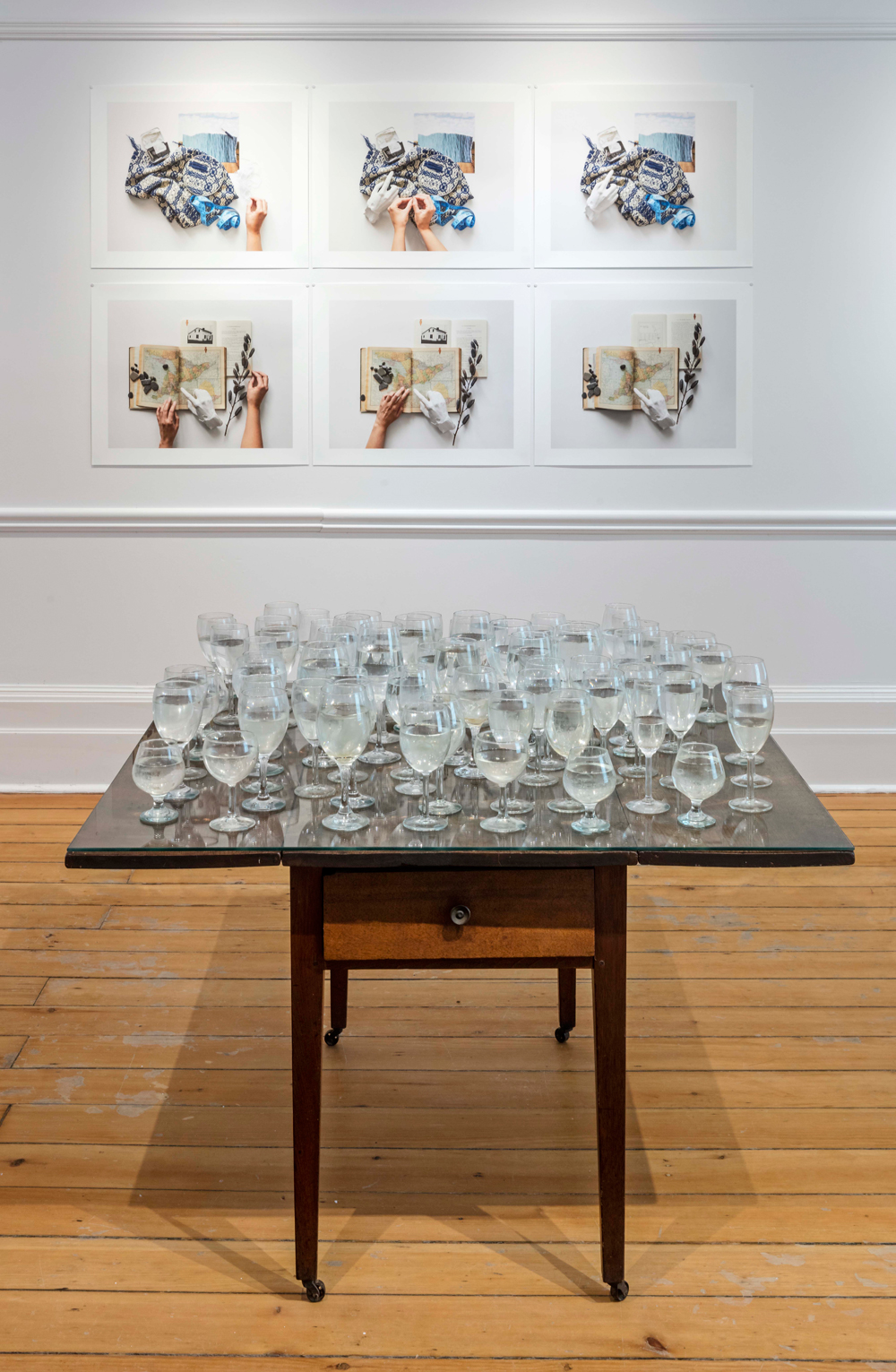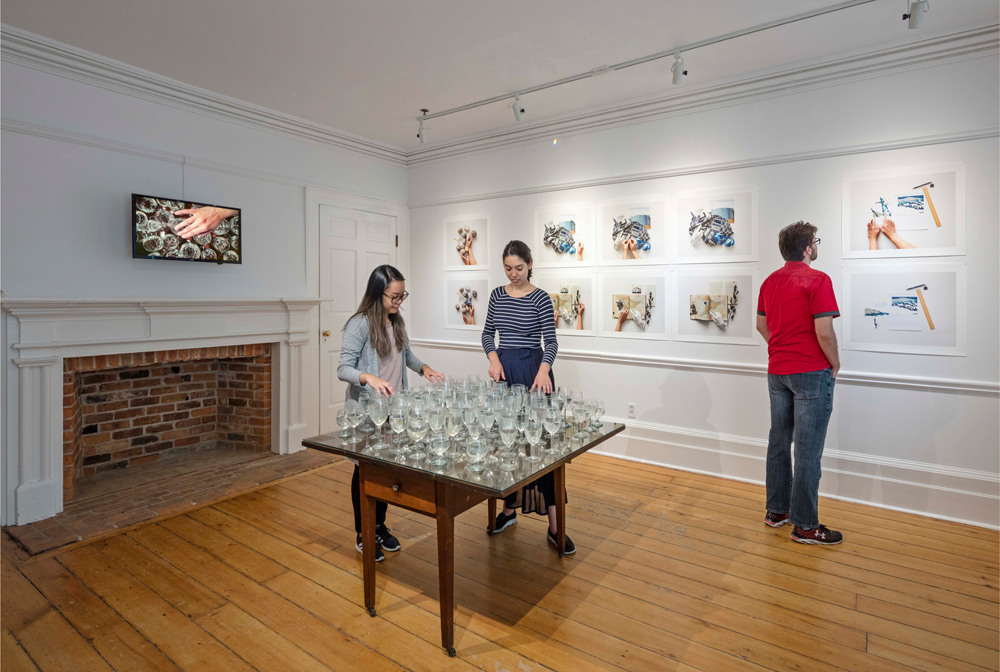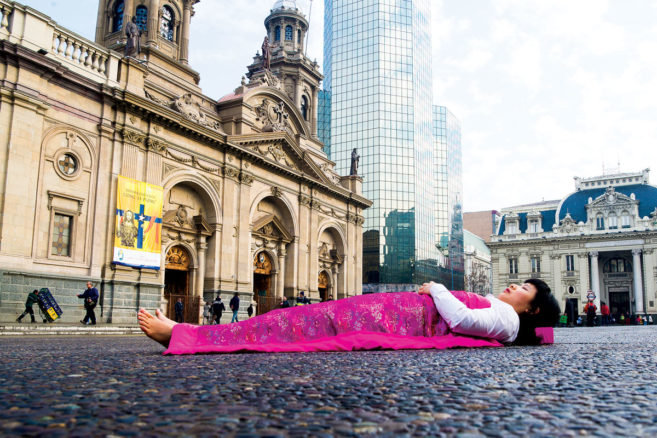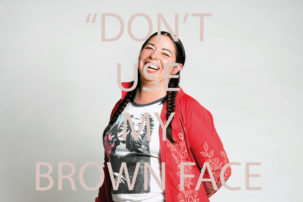On the side of road leading to the historic Bradley Museum in Mississauga, there’s an unusual traffic sign: a yellow diamond that alerts drivers to the hazard of slow-moving, horse-drawn buggies in the area.
But in fact, horse-drawn buggy rides are no longer a feature of the neighbourhood.
Stuart Keeler put a stop to those rides when he became chief curator and manager of the Museums of Mississauga.
Gone at Keeler’s direction, too, are the 19th-century settler costumes that Bradley Museum staff used to have to wear at work every day.
“Nostalgia and longing are the dearth of the heritage-house museum sector,” says Keeler.
Now, through the curation of contemporary art in heritage museum spaces—most recently in a commission at the Bradley Museum by Toronto artist Erika DeFreitas—Keeler is hoping to further shift the tendency of these institutions away from glorifying a so-called “great” past, and instead reflect a more complicated, complex and colonization-aware story.
“It was my first time doing an intervention in a historical space,” DeFreitas says, “And I think what really came forward for me is that so much can happen in these spaces that become a restaging and a reunderstanding of history—especially histories that get written over or hidden the margins.”
Canada’s sixth most populous city has set a clear priority on equity, diversity and pluralism, Keeler notes—a priority most definitely at odds with traditional, white-settler-centric approaches to heritage museum-making.
“Our goal is to have a living heritage approach where all residents see themselves reflected in the story of Mississauga,” Keeler says.
And contemporary artists have a key role to play in subverting those old, dusty, limiting—and often downright incorrect—notions of history that have traditionally been conveyed by heritage museums in Mississauga and beyond.
This spring and summer, that role took material form when Erika DeFreitas decided created a series of installations in the museum’s Bradley House (a two-storey saltbox-style farmhouse from 1830) and the nearby Anchorage (an Ontario Regency style cottage from the early 19th century).
DeFreitas tends, in her work, to explore “the influence of language, loss and culture on the formation of identity,” as she puts it on her website.
Accordingly, several of DeFreitas’s installations at Bradley highlighted the artifice involved in staging history and identity within the heritage museum.
 A pile of posters bearing a picture of Lake Ontario were free for the taking at the Bradley Museum in Mississauga as part of Erika DeFreitas’s summer 2017 exhibition “like a conjuring (bringing water back to Bradley),”
A pile of posters bearing a picture of Lake Ontario were free for the taking at the Bradley Museum in Mississauga as part of Erika DeFreitas’s summer 2017 exhibition “like a conjuring (bringing water back to Bradley),”
For instance, when visitors arrive at the Bradley Museum, many likely assume that the houses on its grounds have been in place for centuries.
Actually, a number of the buildings used to be on a different site, right on the shoreline of Lake Ontario. They were moved inland decades ago when that land was bought by a third party.
Likewise, all of the antique furnishings within the Bradley House are not native to it; they were assembled later by curators and placed within the structure.
“I was thinking about the idea of using these chosen artifacts to replicate a time that they didn’t actually really exist in,” DeFreitas says.
DeFreitas’s installation at Bradley House pointed to the real history of the structure in different ways.
One way was through the title of her show, “like a conjuring (bringing water back to Bradley)”—a nod towards the house’s original shoreline placement.
“The real kind of tie for me became this attempt to bring the water back to the Bradley as a way of furthering that dialogue about the substitute and the surrogate artefact,” DeFreitas says.
Available on a table in the house was a pile of newsprint posters, free for the taking, depicting the waters of Lake Ontario.
“In that time it wouldn’t have been unusual to have bibles open in the home—to have that sense that a presence was always there,” DeFreitas says. “So the first project that came to mind was having a visual of the lake in the space, to conjure that presence visually.”
DeFreitas also reflects the collaged nature of the edifices and their narratives through form—that is, through a “staging” of mixtures of the natural and the artificial.
In the main bedroom of the Bradley House, for instance, DeFreitas has placed actual rocks on top of photographed nature scenes. These types of restagings also became the basis for photographs DeFreitas scattered throughout the installations.
 A circa-1820 table holds glasses full of Lake Ontario water at Erika DeFreitas’s exhibition “like a conjuring (bringing water back to Bradley).” On the wall behind are photographs in which DeFreitas restages historical and contemporary artifacts including fake indigo, history texts and bits of old cloth.
A circa-1820 table holds glasses full of Lake Ontario water at Erika DeFreitas’s exhibition “like a conjuring (bringing water back to Bradley).” On the wall behind are photographs in which DeFreitas restages historical and contemporary artifacts including fake indigo, history texts and bits of old cloth.
Elsewhere, in the Anchorage building, DeFreitas summoned ghosts of history in a more haunting, séance-like manner.
In one room with wide wood floors and a brick fireplace, DeFreitas filled the surface of a circa-1820 drop-leaf oak table with glasses of Lake Ontario water.
“Using the water itself from Lake Ontario to conjure it back was a way of thinking, for me, about playing with senses,” DeFreitas says.
The water, here, wasn’t just a visual element—it also sang throughout the space. A video in that same room showed DeFrietas playing the tips of the wine and brandy glasses with her wetted fingertips, and the eerie sounds of that water (and its containment) wailed wanly through the rooms of the Anchorage.
 An intervention by Erika DeFreitas at the Bradley Museum in Mississauga, part of her summer 2017 exhibition “like a conjuring (bringing water back to Bradley).”
An intervention by Erika DeFreitas at the Bradley Museum in Mississauga, part of her summer 2017 exhibition “like a conjuring (bringing water back to Bradley).”
A kind of conjuring also happened in another DeFreitas installation at the Anchorage.
On the walls of that room, DeFreitas placed huge, large-scale photographs of a tiny piece of blue-and-white 19th-century textile.
The textile, brought to the artist’s attention by a Royal Ontario Museum curator during her research for the project, was from “the period of the Bradley house,” DeFreitas says. “It was hand-woven in Canada, and based on the pattern, they came to the conclusion it was made by someone who was an immigrant. So that furthered my interest in using this textile in placing the history of this house and the history of Canada.”
With a small sculpture of hands dyed blue, and a repeated gesture on video of hands dipping into a bucket of blue liquid, DeFreitas also conjured further questions: Who, exactly, did the bulk of that hand labour in the house, from hauling buckets of water to weaving fabric for blankets and clothing? What was their class? Their gender? Their ethnicity? Where were they from?
“I had talked with [curator] Stuart [Keeler] about an interest in learning to make this indigo dye, and that’s when he mentioned to me that this Bradley family had a property in the south that was an indigo plantation,” DeFreitas says. “This made me think about movement across water—thinking about my mother’s own movements across water coming to Canada, and also the importance of water, how it can be this thing that brings forth life but can also destroy.”
In this way, a small piece of blue and white cloth from the 19th century became much larger in DeFreitas’s mind—and in the space of her installation.
“There was that tie with this idea of movement and loss, all just in that one piece of material and the idea of water,” DeFreitas says.
Part of Erika DeFreitas’s summer 2017 installation at the Bradley Museum in Mississauga consisted of a sculpture of hands dyed blue, set amid large-scale photographs of a small, blue-and-white 19th-century textile. Both elements referenced indigo, a material the Bradley family used to grow at a plantation in the American south.
Though “like a conjuring (bringing water to Bradley)” recently closed at the Bradley Museum, more contemporary art projects are in progress for the site.
Toronto artist Camille Turner, whose work often deals with representations of Black histories and Black futures, has a show coming up there in 2018, as does Anishinaabe/Ojibwa artist Bonnie Devine.
That latter installation dovetails with efforts Keeler has been making to reconnect the Bradley Museum site with Ontario”s Indigenous community. Working with the Peel Aboriginal Network, Keeler got a working sweatlodge built on the museum’s land. The sweatlodge is now in regular, active use in accordance with the moon cycle.
Though Keeler—who came from the world of contemporary art—never saw himself working in the heritage museum sector, he is now enthused by the possibilities for curators and artists.
“At the end of the day, who really has the command on staging history?” Keeler asks. “How are these narratives controlled?” When artists enter the scene, he believes, “that’s where that nostalgia and longing are surreptitiously conquered, really.”
Adds DeFreitas: “Not everything is easy to unfold and unpack” in heritage museums, so “recontextualizing how we see that history is a good way of starting.”

 A view of Erika DeFreitas’ exhibition ”like a conjuring (bringing water back to Bradley)” at the Bradley Museum in Mississauga during summer 2017.
A view of Erika DeFreitas’ exhibition ”like a conjuring (bringing water back to Bradley)” at the Bradley Museum in Mississauga during summer 2017.







